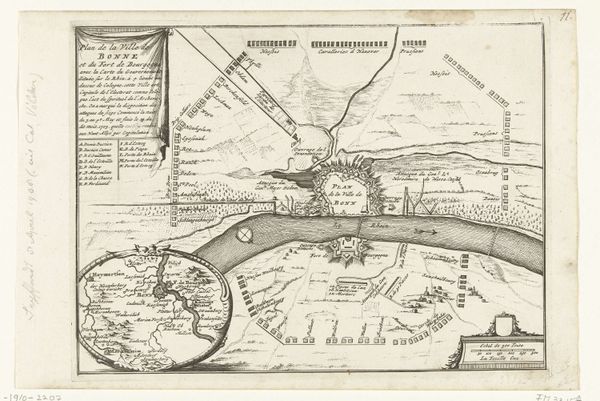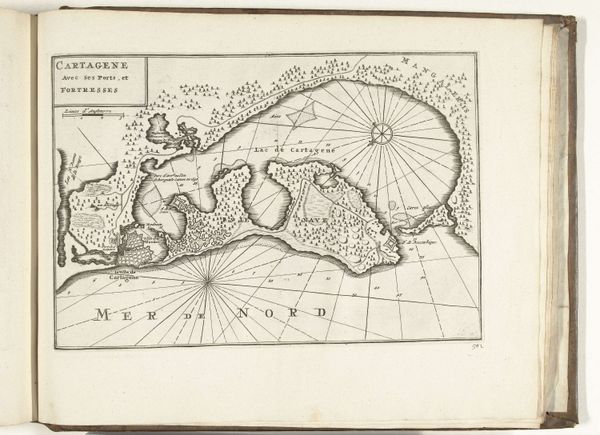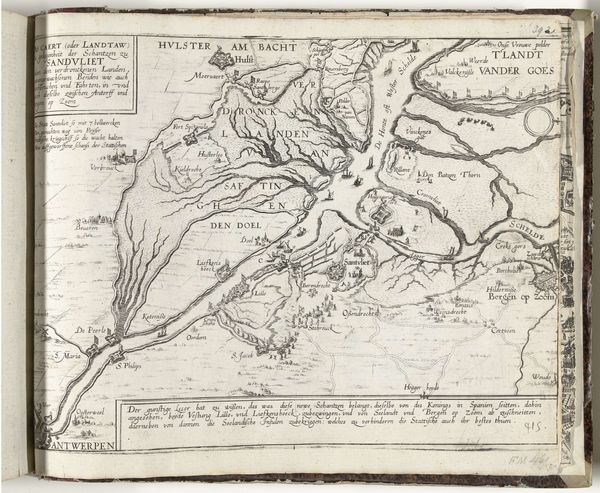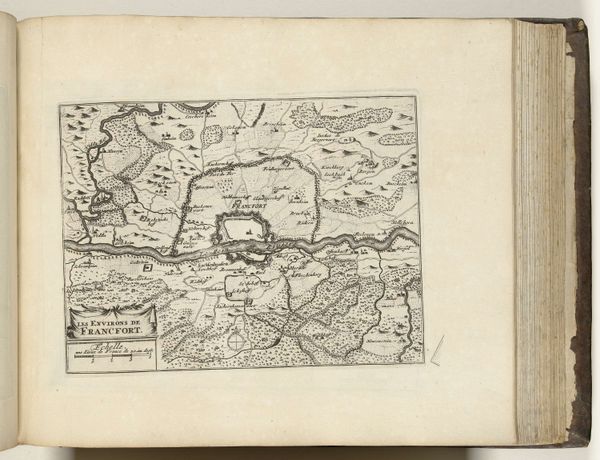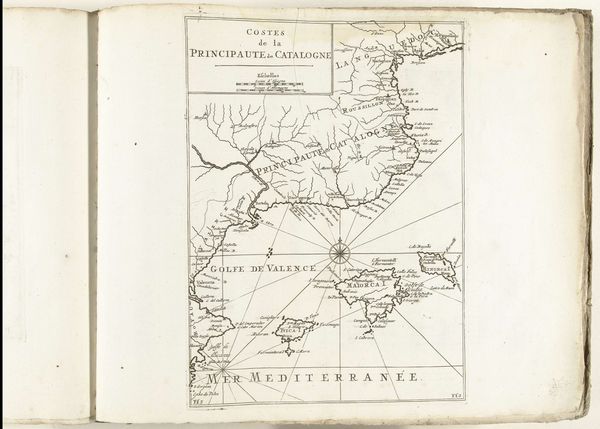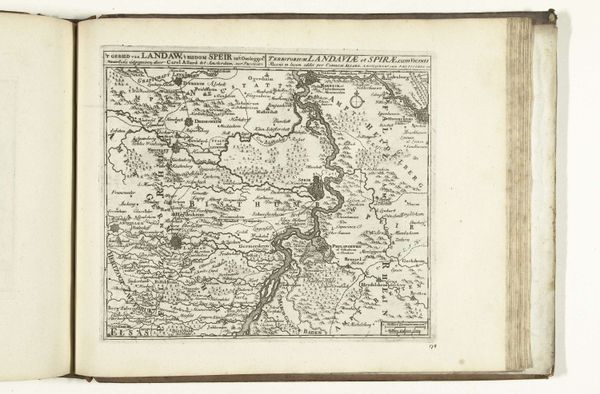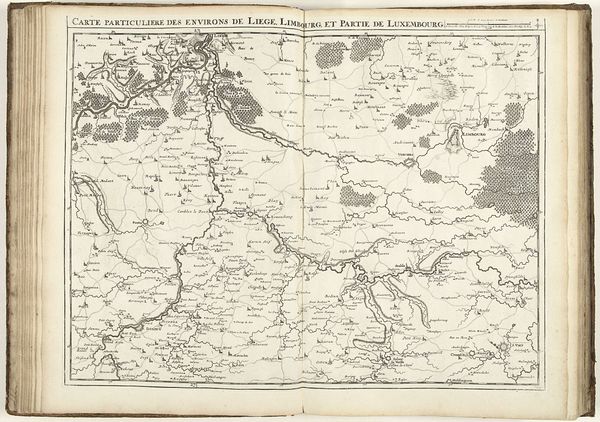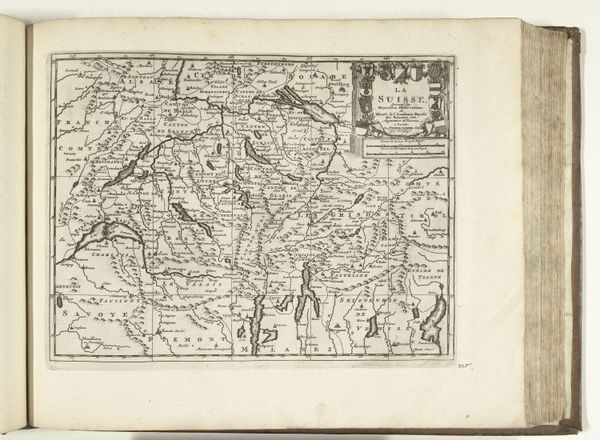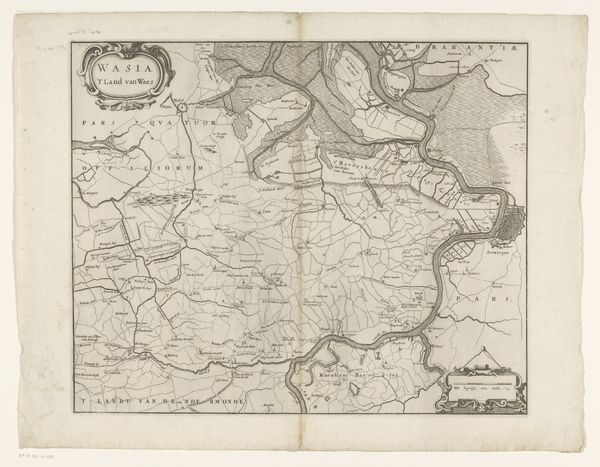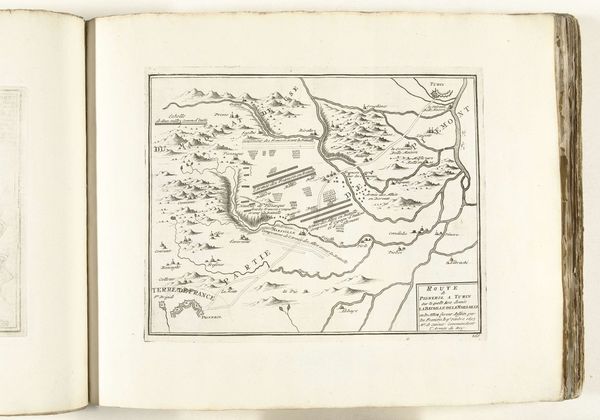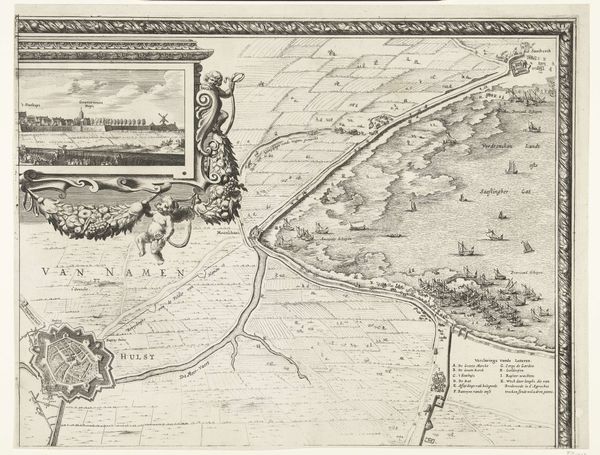
drawing, print, ink, engraving
#
drawing
#
baroque
# print
#
pen sketch
#
old engraving style
#
landscape
#
ink
#
ink drawing experimentation
#
geometric
#
cityscape
#
engraving
Dimensions: height 258 mm, width 376 mm
Copyright: Rijks Museum: Open Domain
Jacobus Harrewijn created this map of the Douai region in 1710. The print’s sepia tones and dense linework invite us to consider the structure of spatial representation itself. Notice how Harrewijn employs a network of lines to delineate fields, waterways, and fortifications. These aren’t just neutral depictions; they're encoded with meaning. The thickness and directionality of lines suggest depth, hierarchy, and movement, guiding our eye across the landscape. The strategic placement of textual annotations functions as a semiotic key, unlocking layers of geographical and political information. Harrewijn’s map destabilizes the idea of a purely objective representation. It's a construct, a carefully organized system of signs that reflects not just physical space but also the power dynamics inherent in mapping and claiming territory. The map frames the land. It also invites us to reflect on the relationship between space, knowledge, and control.
Comments
No comments
Be the first to comment and join the conversation on the ultimate creative platform.
